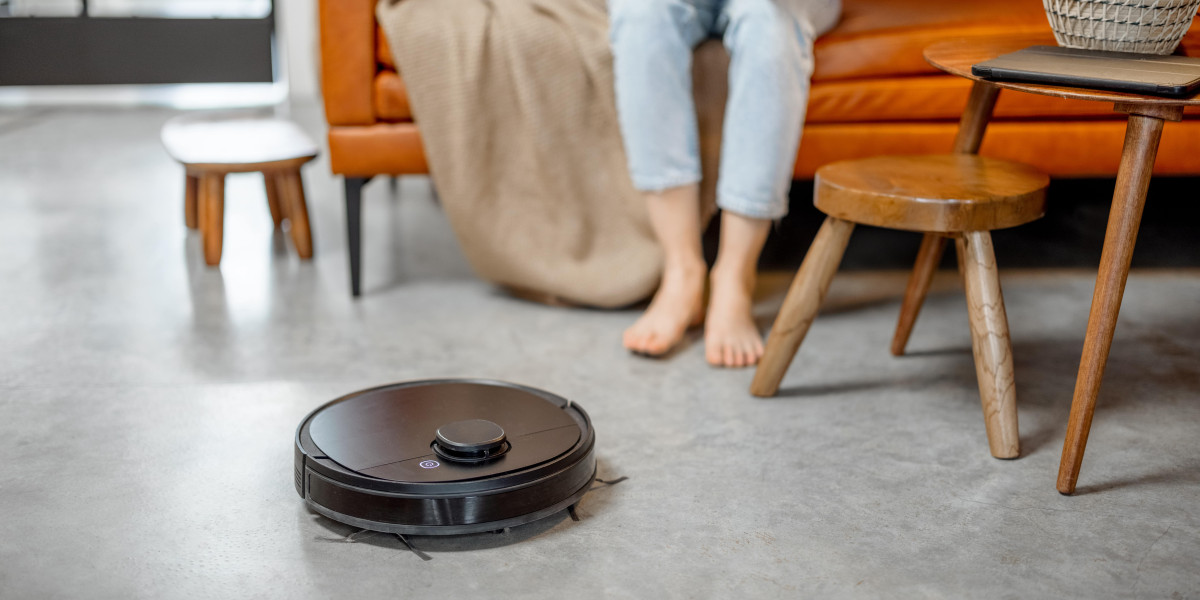
Finding Your Perfect Cleaning Companion: A Guide to Choosing the Right Robot Vacuum Cleaner
The hum of a robot vacuum vigilantly working its way throughout your floors has become a significantly familiar sound in modern homes. These automated cleaning marvels have actually moved from futuristic novelty to family vital, using a tantalizing guarantee: recovering your precious time from the drudgery of vacuuming. With busy schedules and a desire for cleaner home, it's no wonder robot vacuums are soaring in appeal.
But stepping into the world of robot vacuums can feel like navigating an intricate labyrinth. The market is flooded with options, each promising remarkable cleaning power, advanced navigation, and intelligent functions. From affordable fundamental designs to high-end robotics packed with innovative innovation, the sheer range can be overwhelming. So, how do you sort through the noise and figure out which robot vacuum cleaner is really the right fit for your home and way of life?
This guide aims to demystify the process, supplying you with a comprehensive introduction of the key elements to think about when selecting a robot vacuum cleaner. By comprehending these functions and thoroughly examining your needs, you can confidently pick a robotic helper that will perfectly incorporate into your life and keep your floors clean without you lifting a finger.
Secret Features to Consider When Choosing a Robot Vacuum Cleaner
Browsing the specs and marketing jargon surrounding robot vacuums can be intimidating. To simplify your decision-making, focus on these essential features that straight effect performance, convenience, and overall fulfillment:
Suction Power: This is probably the most essential element of any vacuum cleaner, robotic or conventional. Suction power identifies how efficiently the robot can raise dirt, dust, debris, and pet hair from your floors. Measured in Pascals (Pa), higher suction power typically equates to better cleaning performance, particularly on carpets and carpets.
- Consider your floor types: Hardwood floors and tile need less suction power than medium-pile or high-pile carpets. If your home is primarily carpeted, focus on robots with higher suction capabilities.
- Search for adjustable suction levels: Some robotics offer adjustable suction settings, allowing you to personalize the power based on the surface area being cleaned. This can be helpful for delicate carpets or making the most of battery life on hard floorings.
Navigation and Mapping: How a robot vacuum navigates your home is vital for effective and extensive cleaning. Various navigation technologies exist, each with its own strengths and weaknesses:
- Random Bounce Navigation: Simpler and typically discovered in spending plan designs, these robotics move arbitrarily, bouncing off barriers up until they cover the area. While they ultimately tidy, they may miss out on areas and are less effective.
- Methodical Navigation (Row-by-Row): These robotics clean in organized rows, guaranteeing more complete coverage and effective cleaning patterns.
- Smart Mapping (LiDAR or vSLAM): Advanced robots utilize LiDAR (Light Detection and Ranging) or vSLAM (visual Simultaneous Localization and Mapping) to develop comprehensive maps of your home. This permits:
- Efficient path preparation: Optimizing cleaning paths for faster and more comprehensive cleaning.
- Room-specific cleaning: Directing the robot to tidy particular spaces or zones by means of an app.
- Virtual boundaries and no-go zones: Setting up virtual walls or no-go zones to avoid the robot from going into certain areas or harmful delicate products.
- Multi-floor mapping: Storing maps for several floors in your home, ideal for multi-level houses.
Battery Life and Coverage Area: The battery life of a robot vacuum determines for how long it can clean up on a single charge and consequently, the area it can cover.
- Consider your home size: Larger homes require robots with longer battery life. Take note of the producer's mentioned runtime and protection area, keeping in mind these are typically approximates under perfect conditions.
- Auto-recharge and resume: Many robotics include auto-recharge and resume performance, allowing them to instantly return to their charging dock when the battery is low, recharge, and then resume cleaning where they ended. This function is especially essential for larger homes.
Dustbin Capacity: The size of the dustbin effects how regularly you require to clear it.
- Consider your cleaning frequency and pet scenario: If you have pets or run your robot vacuum regularly, a larger dustbin is preferable to lessen emptying frequency. Smaller dustbins might be adequate for smaller homes or less regular cleaning schedules.
- Self-emptying dustbins: Some premium models feature self-emptying bases. After each cleaning cycle (or multiple cycles), the robot instantly moves gathered debris into a larger bin in the base, dramatically decreasing manual emptying.
Smart Features and App Control: Modern robot vacuums frequently come equipped with smart features manageable through a mobile phone app. These functions can considerably enhance benefit and modification:
- Scheduling: Set cleaning schedules to automatically run the robot at particular times, even when you're not home.
- Remote control and monitoring: Start, stop, and monitor cleaning development remotely through the app.
- Zone cleaning and area cleaning: Direct the robot to tidy particular locations or spills as needed.
- No-go zones and virtual walls: Define locations the robot must avoid, safeguarding fragile products or avoiding access to specific rooms.
- Voice control combination: Control the robot with voice commands via smart home assistants like Amazon Alexa or Google Assistant.
- Cleaning history and reports: Track cleaning history, view maps, and get performance reports.
Mopping Functionality (2-in-1 Models): Some robot vacuums provide a 2-in-1 functionality, combining vacuuming and mopping in a single device.
- Consider your floor types and cleaning requirements: 2-in-1 robots can be convenient for homes with hard floors, providing a dual cleaning action. However, mopping functionality typically differs in efficiency and might not replace a dedicated mop for heavy-duty cleaning.
- Types of mopping: Look for information on the mopping system utilized. Some use easy wet fabrics, while others use vibrating or oscillating mop pads for more reliable scrubbing. Water tank size and adjustable water circulation settings are also appropriate considerations.
Brush Roll and Filtration: The design of the brush roll and filtering system impacts cleaning effectiveness and is particularly important for allergy sufferers.
- Brush roll types: Different brush roll designs are better matched for various floor types. Look for:
- Bristle brushes: Effective for carpets for upseting and raising ingrained dirt.
- Silicone/Rubber fin brushes: Gentler on tough floorings and much better at handling pet hair, minimizing tangling.
- Combination brushes: Designed to work well on both carpets and tough floorings.
- Purification systems: HEPA filters are essential for catching fine dust, allergens, and pet dander, enhancing air quality. Consider the type of purification system and whether replacement filters are readily available and affordable.
- Brush roll types: Different brush roll designs are better matched for various floor types. Look for:
Noise Level: Robot vacuums produce sound throughout operation, though usually less than standard vacuums.
- Think about noise level of sensitivity and cleaning times: If you are sensitive to sound or plan to run the robot while you are home, check the sound level specifications (measured in decibels - dB). Lower dB worths indicate quieter operation.
Rate and Budget: Robot vacuums cover a broad cost range, from affordable options to premium designs.
- Determine your budget plan: Set a realistic budget plan before you begin going shopping. Prioritize the functions crucial to you within your budget plan.
- Balance functions and price: Consider which functions are necessary for your requirements and which you can live without. Typically, mid-range designs use an excellent balance of functions and performance without breaking the bank.
Navigating the Choice: Matching Features to Your Needs
Picking the best robot vacuum isn't about finding the "best robot hoover" design in general, but rather the very Best robot vacuum and mop UK design for you. By carefully considering your particular needs and priorities, you can make a notified choice:
- For Pet Owners: Prioritize robotics with strong suction, tangle-free brush rolls (silicone or rubber fin brushes are often advised for pet hair), HEPA filters, and bigger dustbins.
- For Homes with Carpets: Focus on robots with high suction power, bristle brushes, and possibly adjustable brush head height for optimal carpet cleaning.
- For Homes with Hard Floors: Navigation, systematic cleaning patterns, and even 2-in-1 mop/vacuum performance become more crucial. Suction power requirements might be slightly lower.
- For Large Homes: Battery life, auto-recharge and resume, and effective navigation with mapping are vital for covering larger locations successfully.
- For Tech Enthusiasts: Explore robotics with innovative smart features, app control, voice integration, and detailed mapping capabilities.
- For Budget-Conscious Buyers: While basic designs may do not have sophisticated features, they can still provide automated cleaning. Concentrate on essential features within your budget plan, such as good suction and basic navigation.
Making Your Final Decision
Picking a robot vacuum is an investment in convenience and a cleaner home. By comprehending the essential functions and aligning them with your specific requirements, you can with confidence browse the market and discover the ideal robotic cleaning companion. Keep in mind to read reviews, compare specs, and ultimately select a design that will flawlessly incorporate into your life and assist you reclaim your time and enjoy a cleaner, more comfy living space.
Regularly Asked Questions (FAQs) about Robot Vacuum Cleaners
- Are robot vacuum cleaners worth it?
- For numerous, yes. Robot vacuums provide considerable benefit by automating floor cleaning, saving effort and time. They are especially helpful for busy individuals, pet owners, and those with mobility constraints.
- For how long do robot vacuum last?
- The life-span differs depending on the brand name, design, and use. Usually, a good quality robot vacuum can last for 3-5 years with proper maintenance. Battery life tends to degrade with time and might need replacement eventually.
- Can robot vacuums change regular vacuums?
- For day-to-day or routine maintenance cleaning, robot vacuums can significantly lower the requirement for standard vacuuming. However, for deep cleaning, reaching corners, stairs, or upholstery, a standard vacuum cleaner may still be required. Numerous people utilize robot vacuums for routine cleaning and supplement with a stick or portable vacuum for area cleaning and more intensive tasks.
- Do robot vacuums work on carpets?
- Yes, many robot vacuums work well on carpets, particularly models with strong suction and bristle brushes. Nevertheless, efficiency can vary depending upon carpet stack height and robot design. Check specifications and reviews to ensure the robot is ideal for your carpet type.
- Do robot vacuums deal with pets?
- Lots of robot vacuums are created to handle pet hair effectively. Search for designs with tangle-free brush rolls, strong suction, and HEPA filters to record pet dander and allergens. Clearing the dustbin more often might be required with animals.
- How frequently should I run my robot automatic vacuum cleaners?
- The perfect cleaning frequency depends upon your requirements and lifestyle. Daily cleaning is advantageous for high-traffic areas and pet owners. Running the robot a few times a week may be sufficient for less hectic families. Scheduling functions make it easy to automate cleaning according to your preferred frequency.
- How do I keep a robot vacuum cleaner?
- Regular maintenance is necessary for optimal efficiency and longevity. This includes:
- Emptying the dustbin routinely.
- Cleaning the brush roll and side brushes of hair and debris.
- Cleaning or changing filters as recommended by the maker.
- Cleaning down sensing units and charging contacts.
- Looking for and clearing any obstructions in the robot's course.
- Regular maintenance is necessary for optimal efficiency and longevity. This includes:
By considering these aspects and answering these FAQs, you are fully equipped to navigate the world of robot vacuum and find the ideal automated cleaning service for your home. Pleased cleaning!








